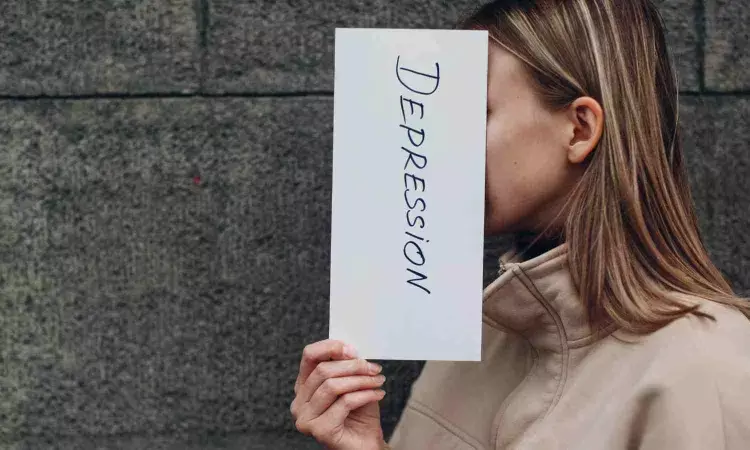- Home
- Medical news & Guidelines
- Anesthesiology
- Cardiology and CTVS
- Critical Care
- Dentistry
- Dermatology
- Diabetes and Endocrinology
- ENT
- Gastroenterology
- Medicine
- Nephrology
- Neurology
- Obstretics-Gynaecology
- Oncology
- Ophthalmology
- Orthopaedics
- Pediatrics-Neonatology
- Psychiatry
- Pulmonology
- Radiology
- Surgery
- Urology
- Laboratory Medicine
- Diet
- Nursing
- Paramedical
- Physiotherapy
- Health news
- Fact Check
- Bone Health Fact Check
- Brain Health Fact Check
- Cancer Related Fact Check
- Child Care Fact Check
- Dental and oral health fact check
- Diabetes and metabolic health fact check
- Diet and Nutrition Fact Check
- Eye and ENT Care Fact Check
- Fitness fact check
- Gut health fact check
- Heart health fact check
- Kidney health fact check
- Medical education fact check
- Men's health fact check
- Respiratory fact check
- Skin and hair care fact check
- Vaccine and Immunization fact check
- Women's health fact check
- AYUSH
- State News
- Andaman and Nicobar Islands
- Andhra Pradesh
- Arunachal Pradesh
- Assam
- Bihar
- Chandigarh
- Chattisgarh
- Dadra and Nagar Haveli
- Daman and Diu
- Delhi
- Goa
- Gujarat
- Haryana
- Himachal Pradesh
- Jammu & Kashmir
- Jharkhand
- Karnataka
- Kerala
- Ladakh
- Lakshadweep
- Madhya Pradesh
- Maharashtra
- Manipur
- Meghalaya
- Mizoram
- Nagaland
- Odisha
- Puducherry
- Punjab
- Rajasthan
- Sikkim
- Tamil Nadu
- Telangana
- Tripura
- Uttar Pradesh
- Uttrakhand
- West Bengal
- Medical Education
- Industry
Bright Light Therapy Proves Effective for Nonseasonal Depressionan, Shows JAMA study

Researchers have found the use of bright light therapy (BLT) as an adjunctive treatment in patients with nonseasonal depressive disorders. A recent systematic review and meta-analysis claimed that BLT has shown significant improvements in terms of remission and response rates over standard treatments such as antidepressant monotherapy or dim red light therapy in these patients. This study was published in JAMA Psychiatry by Artur M. and colleagues..
Researchers conducted a broad search of the MEDLINE, Embase, and Cochrane databases on RCTs published between 2000 and March 2024. Information in eleven trials summarizing the data of 858 patients was included in the meta-analysis, of whom 649 were female (75.6%). The analysis compared the effects of BLT with dim red light therapy or antidepressant monotherapy. The Mantel-Haenszel method was used to compare the differences in treatment-related outcomes, and heterogeneity was quantified using I2 statistics.
• Remission rates were more prominent among patients who had undergone BLT than those who did not undergo BLT (40.7% vs 23.5%; p<0.001).
• The better response rates were also observed with BLT, wherein the overall response rates were 60.4% vs 38.6%, respectively for the non-BLT treatments (p<0.001).
• Remission rates for patients followed up in under four weeks were 27.4% in the BLT group compared to those in the control group at 9.2% ( p<0.005).
• The response rates for the same group were 55.6% in the BLT group compared to 27.4% in the control group (p < 0.001).
• At over four weeks the benefits of BLT continued to exist with remission rates at 46.6% vs 29.1% (p = 0.01).
The researchers concluded that significant enhancement of remission and response rates was seen in the use of BLT over traditional treatments like antidepressants or dim red light therapy. Indeed, it appears that intervention is linked to a quicker time to response in symptoms, particularly within the first four weeks of treatment initiation. The findings also suggest that BLT could provide an effective though safe intervention that is deserved as an adjunct in the armamentarium for the treatment of nonseasonal depression.
Reference:
Menegaz de Almeida, A., Aquino de Moraes, F. C., Cavalcanti Souza, M. E., Cavalcanti Orestes Cardoso, J. H., Tamashiro, F., Miranda, C., Fernandes, L., Kreuz, M., & Alves Kelly, F. (2024). Bright light therapy for nonseasonal depressive disorders: A systematic review and meta-analysis. JAMA Psychiatry (Chicago, Ill.). https://doi.org/10.1001/jamapsychiatry.2024.2871
Dr Riya Dave has completed dentistry from Gujarat University in 2022. She is a dentist and accomplished medical and scientific writer known for her commitment to bridging the gap between clinical expertise and accessible healthcare information. She has been actively involved in writing blogs related to health and wellness.
Dr Kamal Kant Kohli-MBBS, DTCD- a chest specialist with more than 30 years of practice and a flair for writing clinical articles, Dr Kamal Kant Kohli joined Medical Dialogues as a Chief Editor of Medical News. Besides writing articles, as an editor, he proofreads and verifies all the medical content published on Medical Dialogues including those coming from journals, studies,medical conferences,guidelines etc. Email: drkohli@medicaldialogues.in. Contact no. 011-43720751


